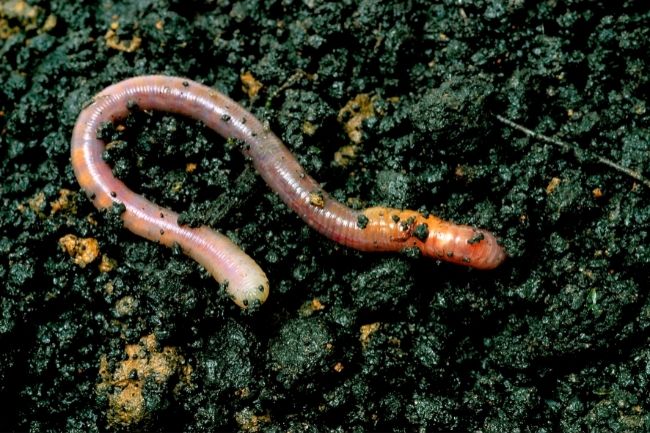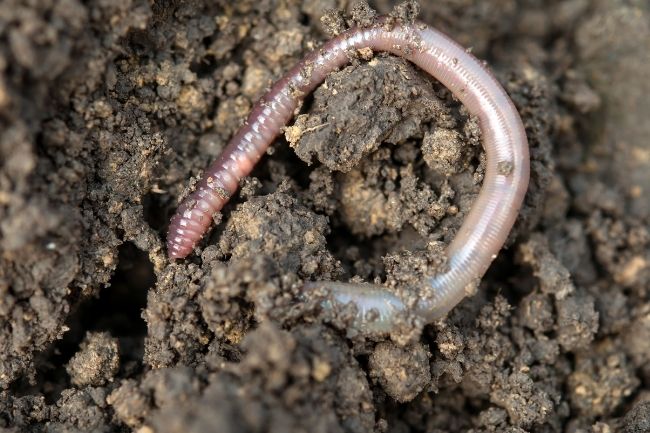Earthworms do have a head end and a tail end, with the head being the end of the worm containing the mouth and the majority of their eyes.
Contents
Heads or tails?

If we are asked to point out which end is the front and which is the back of the majority of animals, it wouldn’t take us long to do so. In our way of thinking, the front of the animal holds the head, where the brain, eyes, ears and mouth are usually located. The tail end usually contains the sexual organs and the rectum.
For humans, we may think of things a little differently, as we walk on two legs, meaning technically our head and our tail can be found on roughly the same vertical plane. Instead, we think more in terms of a front and back. The front is the direction in which we walk, and where our eyes are found. The back is the other side of the body, the side of us facing away from the direction we are taking.
So far so good. But while the head and the tail may be easy to point out on a horse or the front and back on a human, when it comes to some animals the question becomes a little harder. After all, where can we reasonably say the front and back are on a jellyfish or a mushroom?
| Aspect | Front End | Back End |
|---|---|---|
| External Features | Lighter in color, often more flattened | Darker in color, usually rounded or tapered |
| Mouth | Located at the front end, used for feeding | No mouth present |
| Prostomium | Present, acts as a sensory organ | Not present |
| Setae | Fewer setae (bristles) compared to the back end | More setae (bristles) covering the segments |
| Reproductive Pores | Absent | Present on certain segments |
| Sensory Organs | Eyespot(s) may be present | No eyespot(s) |
Speaking of earthworms, we may feel that there cannot possibly be a front and a back. Earthworms are essentially little tubes of flesh, that seem, to the human eye, to look exactly the same from one end to the other.
Yet, while the earthworm may not have the clear definition we are used to in mammals, reptiles or fish, closer inspection will show that there certainly is a head and a tail.
Firstly, the earthworm has a mouth, which is located on its head at one end of the worm. We may not easily be able to see this mouth with our naked eye, but it works just the same as our own, grasping onto and biting off food so the earthworm can swallow it and consume the goodness from that food.
When it comes to the other sensory features we might have come to expect on the head of an animal, however, things do get a little more complicated. Earthworms do not have ears. Instead, they can sense the vibrations in the soil around them through their bodies and sensory organs located along with them.
A nose too is missing, though they have chemosensors along their body, that can detect certain chemicals. This can help them find food and avoid danger.
In terms of eyes, earthworms have many located across their body, however, the vast majority of their eyes are found on their head. Their eyes are much more simplistic than ours and are largely there to sense light and dark.
It is important that most of them are on their head, as emerging into the light can be dangerous for an earthworm, due to the many predators that would be interested in such a tasty snack.
In terms of the direction of travel, earthworms tend to move forward, with their head facing the direction they want to go. As with all animals, they may sometimes travel backwards, such as if they need to escape a predator.
One easy way to identify the head in an adult worm, is that just behind it they have a saddle, which is a different colour from the rest of the worm. This is not present in juveniles, however.
At the tail end of the worm, we find the rectum, where the digestive tract ends and worms expel faeces. This is also where the worm’s sexual organs are located.
So while we may think of the worm as being identical at either end, there are distinct sections to the worms, with one end clearly defined as the head, and the other as the tail.
Beyond this, worms even have a front as a back. Although their tubular appearance may make us think that they do not have a top and bottom, worms do essentially have a belly and a back, preferring to travel a certain way up.
Also read: Earthworms Reproduction Explained (Sexual and Asexual)
Does an earthworm have a backbone?

Worms have what is known as a hydrostatic skeleton. Rather than having bones inside them to help support their shape, they have a hollow space, which is then filled with pressurized fluid. This helps to support the worm and allows it to move around.
The hydrostatic skeleton is made up of a series of segments. Although this could be compared to the vertebrate within a backbone, it is not the same structure. Earthworms, therefore, do not have a backbone.
Can an earthworm survive being cut in half?
The old tale that if an earthworm is cut in half, the two halves will go on to become two separate worms is unfortunately untrue. One of the reasons we believe this may be because both ends of the worm may continue to move when it has been cut in half. This is partly because the earthworm’s brain regulates movement within its body, and when cut off from the brain signals, the earthworm’s body can start to move uncontrollably.
What is true is that the head of the earthworm can go on to regrow its body and survive, so long as enough of its core parts survive. Usually, if it is cut below the saddle, it can live. The other end, without the brain and other important parts located within the head, will wither and die.
Also read: Earthworms’ Brains Explained (A Collection of Nerves)

